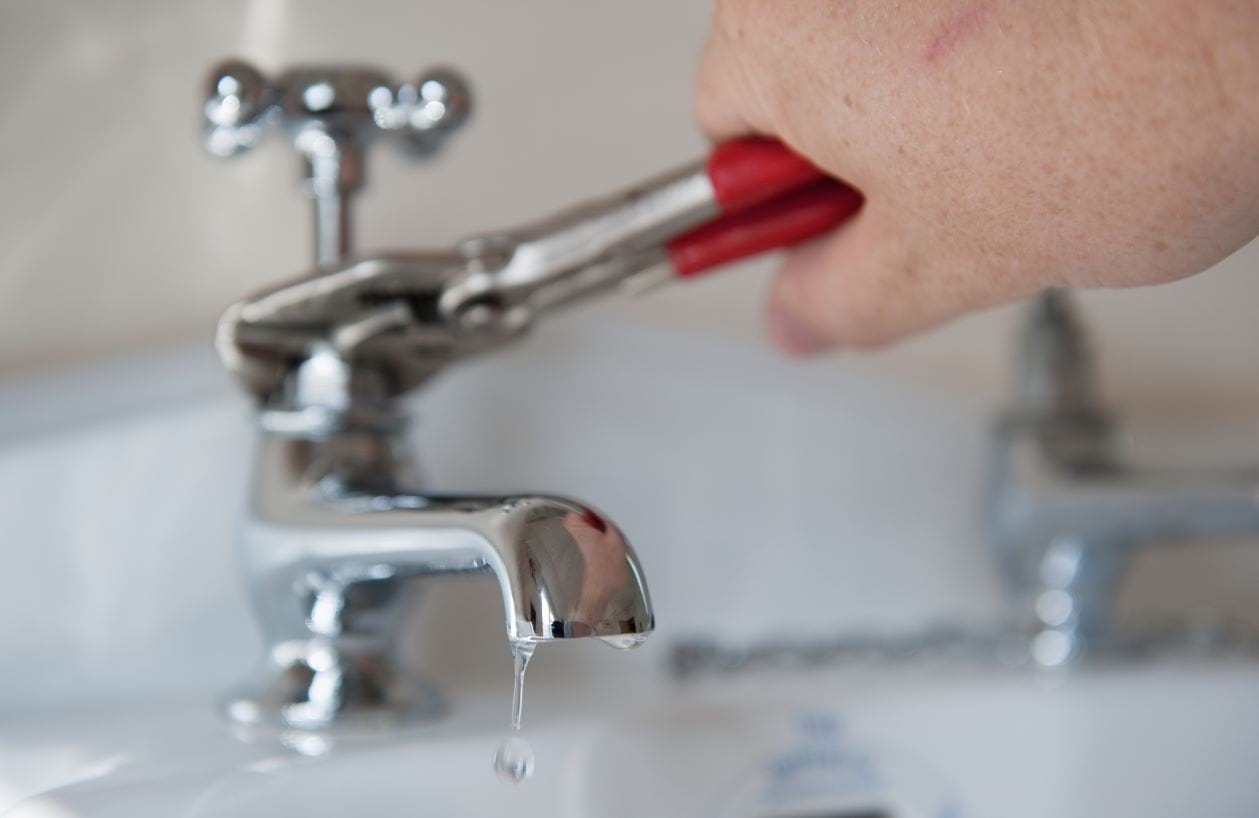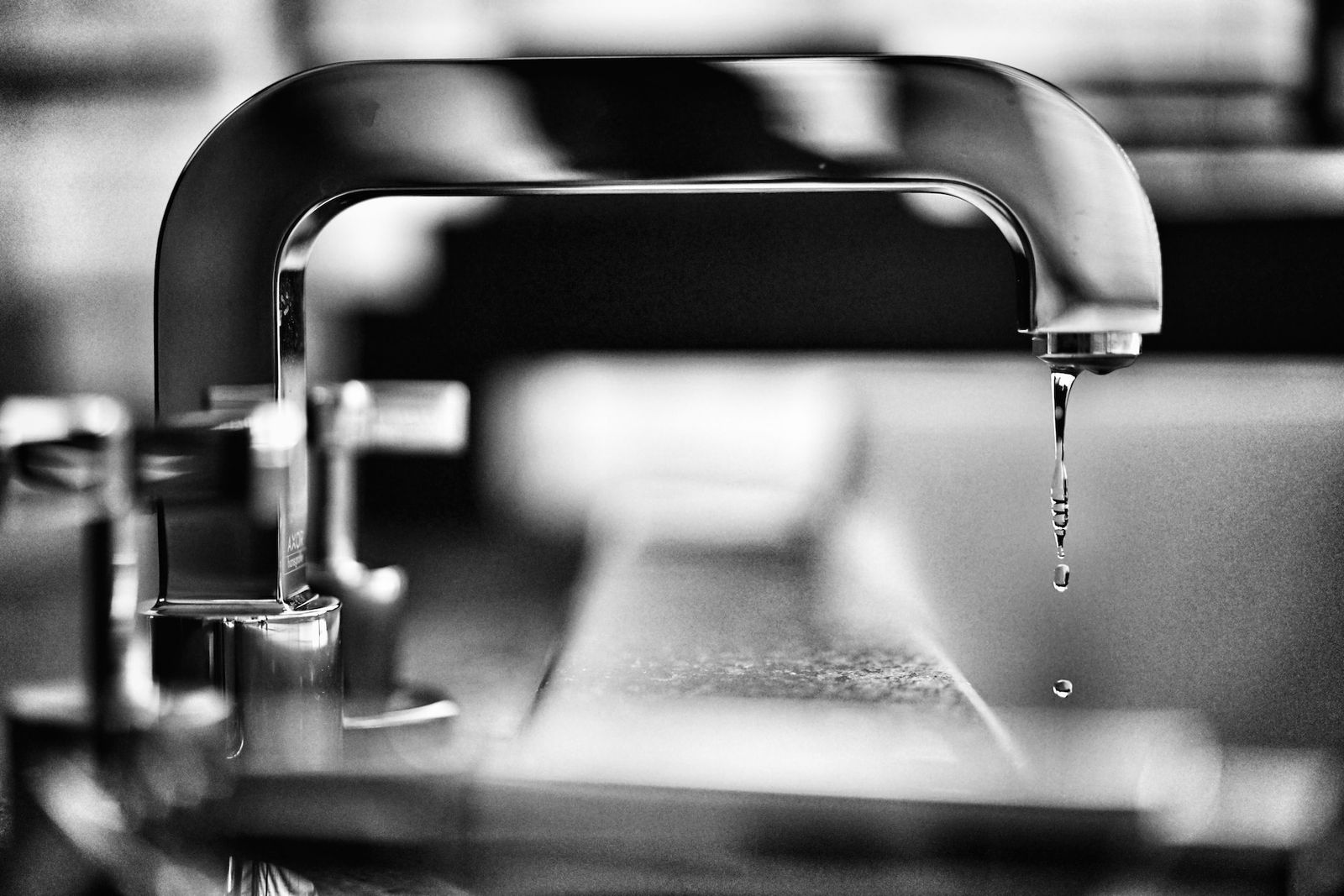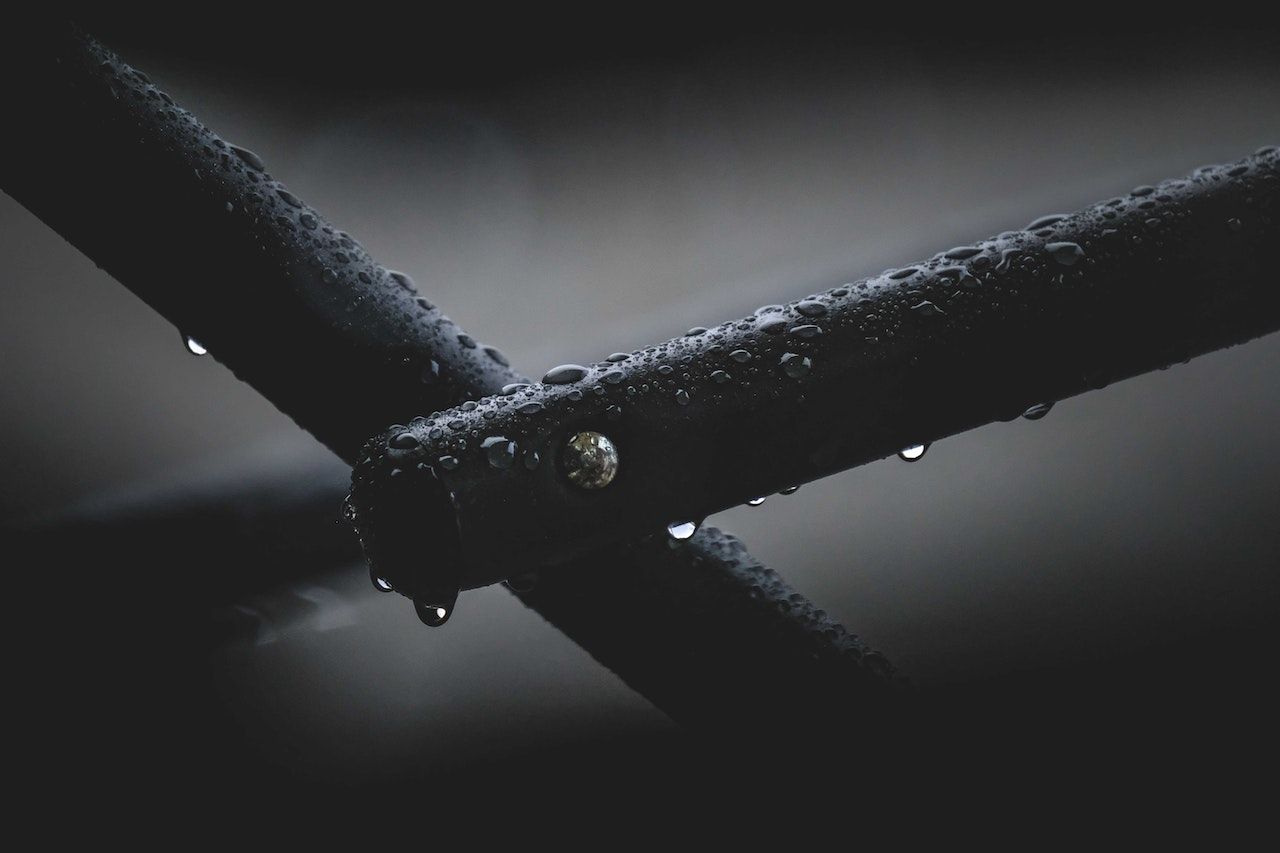From relatively inexpensive minor issues all the way to a major pipe leak or a sewer system backup that can cause severe damage to personal property, floors, and walls, plumbing problems come in different shapes and sizes.
Below are common plumbing problems, including their causes and how to fix them. Note that you can deal with some plumbing issues in a relatively straightforward manner, while others almost certainly require professional plumbing repair.
1. Dripping Faucet
Broken or corroded valve seats, cracked valve seals, and worn O-ring bearings are some common causes of dripping faucets. Knowing why your taps in the bathrooms and kitchens are dripping is an important step to fixing the problem and avoiding further damage to your plumbing system.
You need to make sure that the seals for both the sink and the bathtub are cleaned regularly to keep out dirt and other particles that may cause a clog, corrosion, or any damage in these areas. This will ensure that your faucets are running smoothly and experience no interruptions from clogs.
When cleaning your sinks and baths, it's important that you only use mild detergents and soap products, as strong soaps can actually degrade the seals.
Sometimes, you may also need to check the water supply to your home. If your taps in the kitchen and bathroom are no longer running because they're clogged, you may need to turn the water off or cut the power to these areas.
2. Slow Draining Sink
With a few tools, specifically a vacuum pump, you can fix a slow-draining sink right away. To get started on your job, make sure you have a sturdy bowl or container that's deep enough to drain into.
The next things you need are some good-quality plunger attachments, such as a hose, wire brush, rubber or latex gloves, and rubber bands. Next, you should attach the plunger to the drain opening of the bowl using some of your extra gloves. Then, insert one hand underneath the bowl and gently pull up on the plunger until the suction pulls it downward to the sink's opening. Then, remove the hand and repeat the process until all suction is eliminated from the sink.
Once you've accomplished this task, you may now be able to see the cause of the slow drain. What you need to do next is to remove the rubber bands and wire brush from around the plunger head. You should also remove the hose, gloves, rubber bands, and the rubber or latex gloves. Now, take the pipe wrench in the sink and use the suction to suck out as much water as you can.
3. Clogged Drain
Most clogged drain problems result from dirt, hair, and even skin clumping together and forming a solid, hard film on the sides of drain pipes, which then forms into a tight seal on the drain itself. Over time, that hardened gunk builds up and decreases water flow. Eventually, clogged toilets turn into a big problem.
Common and potential fixes for clogged drains include the following: cleaning the drain yourself or getting a plumber to clean it out or, if broken, doing a repair or replacement of the drain. If this is a problem that is repeatedly coming back then it might be best to get your nearest plumbing service provider in your area to install a newer, more effective drain, especially if there is a risk of water damage to your home.
Whether you live in Campbelltown in NSW and need a plumber in Campbelltown or you need a plumber in Yarraville, Victoria ExpertEasy has plumbers registered in all major cities in Australia that can help you.
4. Clogged Toilet
With a plunger, you can take your clogged toilet up and down the drain in no time at all and get your toilet back in action again. First, remove as much water as you can from the water valve to begin the plunger cleaning process. Be sure to remove any water that may have built up as a result of the previous cycle of using the toilet.
Once the water is completely removed from the valve, turn on the faucet and rinse the drain. Use a plunger to empty the inside of the trap (located next to the drain pipe) of as much water as possible. Once it's clear, put on your elbow grease and go ahead and slowly move the plunger back and forth through the trap, making sure that you're able to clear out any trapped water completely. Once the trap is clear, replace the water valve.
5. Leaking Pipes
One of the biggest causes of a leaking pipe is when the material from which the pipe was made loosens. When this occurs, the water pressure in the pipe increases, and the pipe begins to leak. You should also look at the construction materials of the pipes that you have in your home because they may also be susceptible to cracks and weak spots. If you notice your wall getting wet, there's a good chance that water is leaking somewhere else.
To solve leaking pipes, turn off your water supply, then run a small pipe bender down the leak. Use an appropriate pipe sealant to fix the leak. After it's applied, wait a few minutes before you plug the area back into the plumbing.
Before you plug it back in, make sure that all of the water in the pipe has been drained and the area has dried. If this isn’t done, the sealant will start to weaken and eventually break, allowing the area to leak again. If a pipe sealant can’t fix the leak, a pipe replacement may be needed.
6. Faulty Water Heater
When you find a faulty water heater, there are a few things that you'll want to look for in order to determine whether or not it needs to be repaired or replaced. If your heater is noisy than usual, this could be a warning sign that the unit is having trouble operating properly. Also, coloured and smelly water can be caused by iron deposits in the water.
When looking at troubleshooting faulty water heaters, you'll first want to check to make sure the system isn’t leaking. You should look for leaks in the exterior of the tank or around the heating coils. It's always important to make sure that the filter isn’t clogged or plugged up, as this can cause your unit to work improperly.
Final Thoughts
Plumbing problems arise when homeowners least expect them. Sometimes, you’ll find that there’s no water when you take a shower, or, maybe, it’s just cold water you got because the water heater isn’t working. Other times, the toilet overflows with dirty water.
Of course, leaking pipes could also cause a mess. You can fix minor plumbing issues. However, the more serious incidents will more likely require a professional’s help, so don’t hesitate to call a reliable plumber in your area. Inner City Plumbing is a great option if you are in the Central Business District.







